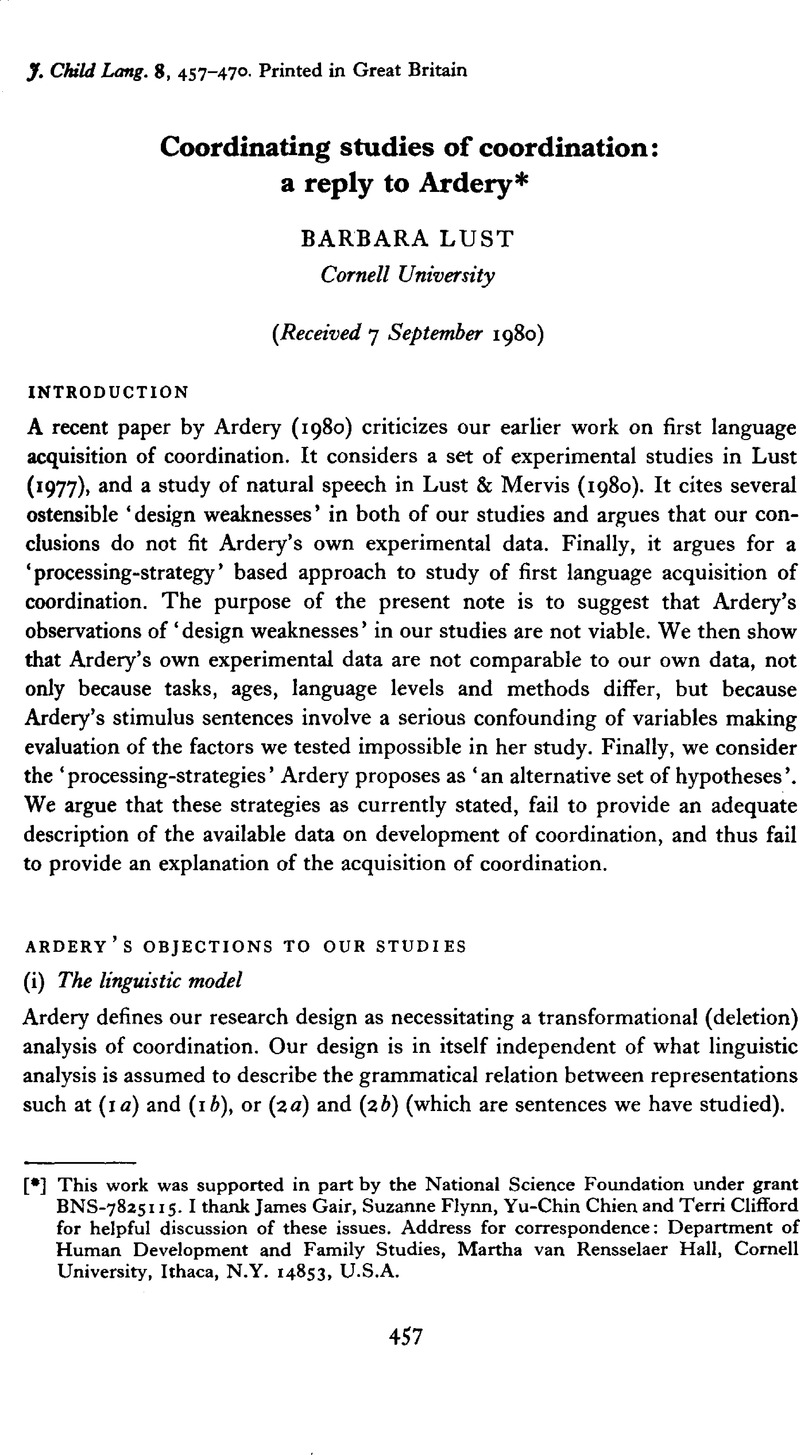Crossref Citations
This article has been cited by the following publications. This list is generated based on data provided by Crossref.
Peterson, Carole
and
McCabe, Allyssa
1987.
The structure ofAND coordinations in children's narratives.
Journal of Psycholinguistic Research,
Vol. 16,
Issue. 5,
p.
467.
Lust, Barbara
Chien, Yu-Chin
and
Flynn, Suzanne
1987.
Studies in the Acquisition of Anaphora.
Vol. 6,
Issue. ,
p.
271.
Lust, Barbara
Flynn, Suzanne
Blume, María
Park, Seong Won
Kang, Carissa
Yang, Sujin
and
Kim, Ah-Young
2016.
Assessing child bilingualism: Direct assessment of bilingual syntax amends caretaker report.
International Journal of Bilingualism,
Vol. 20,
Issue. 2,
p.
153.





